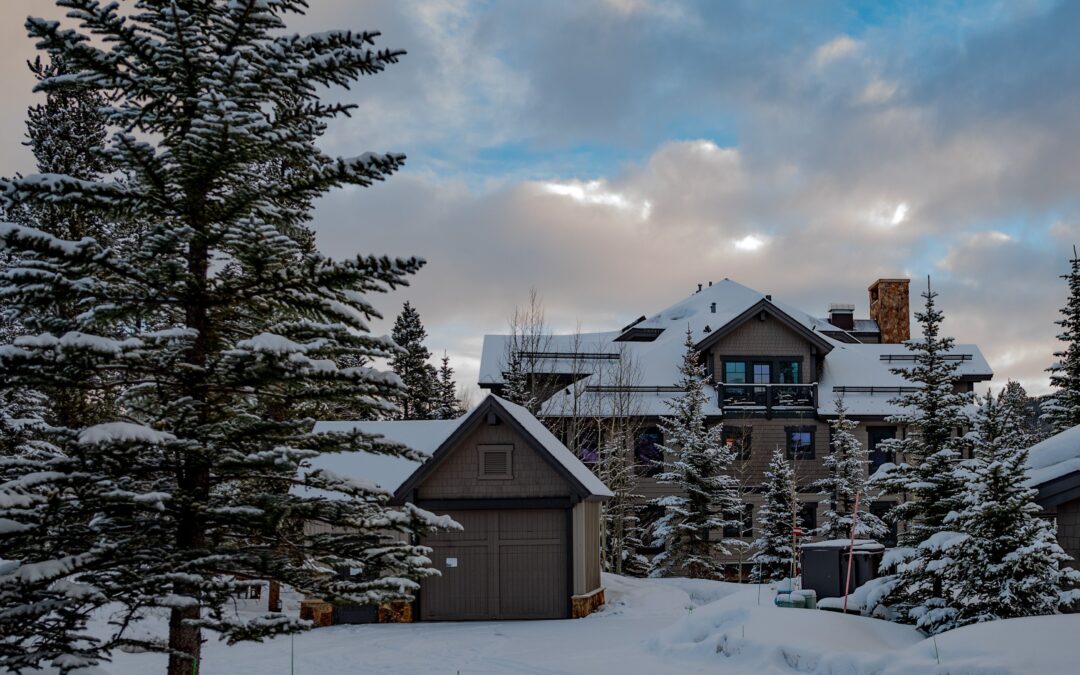Living in Summit County means enjoying world-class skiing and breathtaking mountain views, but it also comes with unique challenges for homeowners. At elevations above 9,000 feet, preventing frozen pipes isn’t just about comfort – it’s about protecting your home from potentially catastrophic damage.
Why Mountain Homes Are Particularly Vulnerable
Summit County’s combination of high altitude and extreme temperature swings puts unprecedented stress on your plumbing system. Water pipes in mountain homes are especially susceptible to freezing because lower atmospheric pressure at high elevations causes water to freeze at slightly higher temperatures than at sea level. Add in our frequent sub-zero temperatures, and you’ve got a recipe for potential disaster.
Essential Prevention Steps
Insulation Is Your First Line of Defense Don’t just insulate your pipes – insulate them properly for our altitude. Pay special attention to pipes in unheated areas like crawl spaces, attics, and exterior walls. Use high-quality pipe insulation rated for extreme cold, and don’t forget to insulate the gaps where pipes enter your home.
Keep Your Home Heated Even when you’re away, never let your home’s temperature drop below 55 degrees Fahrenheit. While this might seem warm enough, remember that temperatures inside exterior walls can be significantly colder than your thermostat reading. Smart thermostats can alert you to dangerous temperature drops, giving you peace of mind when you’re not there.
Let Faucets Drip During extreme cold snaps (and we get plenty in Summit County), letting faucets drip can prevent freezing. Moving water is much less likely to freeze than standing water. Focus on faucets connected to pipes along exterior walls or in unheated spaces.
Know Your Home’s Vulnerable Areas In Summit County homes, we often see frozen pipes in predictable locations:
- North-facing exterior walls
- Areas with poor insulation
- Pipes near garage doors
- Garden hose connections
- Sprinkler systems
Professional Prevention Measures
Consider having a professional plumber install:
- Heat tape or heating cables on vulnerable pipes
- Additional pipe insulation in crawl spaces
- Anti-freeze systems for sprinkler lines
- Pressure relief valves to prevent pipe bursts
- Smart water monitoring systems
Emergency Preparations
Keep these items accessible:
- Location of your main water shutoff valve (mark it clearly!)
- A backup heating source
- Contact information for emergency plumbing services
- Basic pipe insulation materials for quick repairs
Signs of Trouble
Watch for these warning signs:
- Reduced water flow
- Strange sounds in pipes
- Frost on exposed pipes
- Unusual odors from drains
- Bulging pipes
The Cost of Prevention vs. Repair
While prevention measures might seem expensive, they’re a fraction of the cost of repairing frozen pipe damage. A single burst pipe in Summit County can easily cause $10,000 or more in damage, especially if you’re not home when it happens.
Local Considerations
Summit County’s varied microclimates mean homes in Breckenridge might need different precautions than those in Dillon or Frisco. Working with a local plumber who understands these nuances can make a significant difference in protecting your home.
Remember, in Summit County’s challenging mountain environment, preventing frozen pipes isn’t just about following general guidelines – it’s about understanding and preparing for our unique high-altitude conditions. Taking these precautions now can save you from a costly and stressful pipe emergency during our harsh mountain winters.
Call a Summit County, Colorado Plumber Today
Want to be absolutely sure your home is protected? Schedule a professional winter readiness inspection. A qualified local plumber can identify vulnerable areas in your specific plumbing system and recommend targeted solutions for your home’s unique needs.

